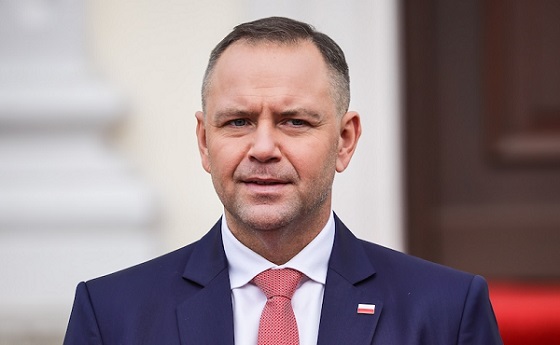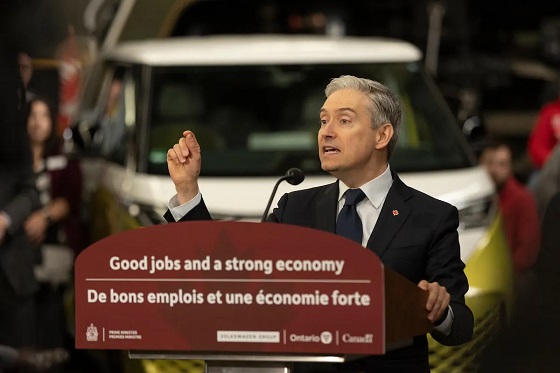International
Europe Can’t Survive Without America
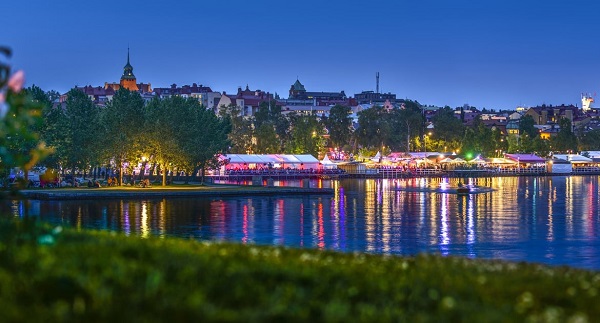
 Sven R Larson
Sven R Larson
But it is not America’s job to save the old continent
The most beautiful place in the world is located smack dab in the heart of northern Europe. It is a small town called Östersund. It stretches along the eastern shore of Storsjön, the “Great Lake”.
Across the strait from Östersund is the island of Frösön. From the farmlands in its center, you can see 30 churches, dense forests, crop fields, and on the far side of the Great Lake a horizon filled with snow-clad mountains. There is a church there, on the Frösön, where the world’s happiest marriages begin: when the bride walks out from the church, she is so overwhelmed by the gorgeous view that she forever loses her ability to speak.
My Swedish hometown is not the only place where Europe brims with beauty. From endless oceanic views in Ireland’s Galway to the meandering riverside cityscape in Budapest; from the midnight sun in Nordkap to the seductive darkness of Palermo; cities that let you marinate in living history, like Munich, Stockholm, Vienna, Rome, and Edinburgh.
Europe has it all. And yet, that continent is slowly, sadly, but inevitably sinking. It is a terrible conclusion to reach, but I see no other path forward for them.
Thanks for reading Larson’s Political Economy!
Subscribe for free to receive new posts and support my work.
There are a multitude of reasons for this; the destruction of such a solid piece of civilization does not come easy. Which, in all honesty, is a tribute to the solidity of the Western project in itself: it takes decades of political and economic mismanagement to bring a continet of 500 million people from the top of world prosperity into the murky quagmire of industrial poverty.
However, that is precisely what the Europeans are now doing. Their decline only seems to be reinforced by every new measure to prevent it.
From an American viewpoint, the increasingly depressing state of Europe has not yet risen to the peak of the news cycle. Perhaps it never will, but the transformation of Europe from the world’s most advanced economy (alongside America) to an economy-class Latin America will have major economic, geo-strategic, and cultural consequences.
Before I dissect those consequences, let me point to the main character traits of Europe’s self-inflicted demise.
Lack of Leadership
If there is one thing Europe does not have, it is visionary political leadership. Not that our own crop of political heralds in Washington are much to brag about, but the new Trump administration actually does have an idea of how to make America better. By his fast-paced, confident leadership, Trump is now challenging the Democrats to step up to the plate; with a little bit of luck, we will go into the coming elections choosing between candidates running on different versions of “America’s best days are ahead of us”.
None of that exists in Europe. To the extent their leaders formulate ideas for the future, it is all about how government can spend more money, regulate more of the private sector, and dole out grants to NGOs to run the internet era of a billboard campaign themed around some empty political slogan. This is endemic in the EU, and it has tangible consequences: just last year the Europeans realized that America was running away with the path to artificial intelligence, while Europe has not yet even built its own Silicon Valley for old-school computer technology.
The realization among Europe’s political leadership that they are losing the AI race led the EU to issue a report suggesting more regulations on private-sector AI development and more government spending to investigate the potentials of the AI revolution.
Such is the European response to every issue, including the so-called green transition. When Americans elected a new president to end the mad dash into EV transporation—and instead let the free market be the arbiter on how we propel ourselves around town—the EU and national government leaders in Europe waged a virtual economic war on fossil fuels, without being even close to replacing it with “renewables”.
The German energy debacle went so far that major German manufacturers accelerated their foreign direct investments in other countries. This is one reason why there will be a lot more auto industry jobs here in America in the coming years. While European political leaders get fixated on some outlandish economic fantasy, America gets down to business, goes to work, and moves forward.
In addition to the fantasy that the green transition should be shoved down people’s throats by government, Europe’s political leaders have surpassed the Biden administration many times over when it comes to immigration—legal and illegal. Instead of asking pragmatic questions about the balance between a mostly uneducated labor supply and Europe’s perennially high unemployment rates, the elected officials and their unelected bureaucrats in Brussels, Paris, Berlin, and other EU capitals forge ahead like drunken cows. They have deliberately unhinged themselves from reality; it is only in a fantasy world free of opposing arguments that you can flood the streets of your cities with endless waves of immigrants, without causing major social, economic, and public safety problems.
A War on Democracy
Again, America is not immune to this kind of make-believe leadership, but unlike America, Europe has no voice of opposition. Where the Tea Party turned MAGA movement showed how true democracy works, forging a nationwide organic alliance of voters, Europe has invented institutions, conventions, policies, and a political culture of efficiently suppressing opposition.
There is no First Amendment in Europe, which politicians in both the EU and national governments have taken advantage of. In what can only be described as a war on the core of democracy, the European political elite is fighting an increasingly aggressive battle against dissenting voices. National governments are formed not to further the will of the people, but to quell the voice of dissent.
Coalitions of resentment against the people have appointed prime ministers in Sweden, Finland, Austria, France. A coalition of resentment is trying to form a functioning government in Germany. Where hatred of a common adversary is the only common denominator, there can be no room for visions. All political eyes remain in the rearview mirror, anxiously trying to keep the distance from the last election results.
People are blinded by a common hatred they cannot see the future.
From the viewpoint of policy, the only thing that these coalitions of resentment can produce is a regurgitation of the past. This explains why there is no debate in Europe over the “green transition” and why there is only token talk about immigration. Prevailing paradigms, which caused people to vote for alternative parties, reign unchallenged.
As do their consequences. In other words, the more Europe’s anti-democratic leaders double down on policies that thwart free speech, choke their economy, and fragment cohesive societies, the more they will distance themselves and their continent from the future.
A Stupid Economy
Europeans pay far more in taxes than we Americans do. Income taxes often start at 30-40 percent—for the lowest incomes—and there are value-added taxes, VATs, on everything they buy. Excise taxes, “green taxes”, fees and administrative charges run amok.
At the same time, they don’t get much more than we do. If anything, they get less of most of things. In health care (which I hope to have time to write more about in closer detail), Europe’s foremost contribution is the waiting list. You have the right to health care, but that does not mean you can get it.
The same is true for the countries in Europe that have elaborate systems of child care: you have the right to it, but that does in no way mean it can find a spot for your kid when the time comes.
Europeans brag about their paid-leave programs. It is true that, e.g., parents can take a lot of time off from work to be with their kids. They also have long vacations. However, since these benefits are mandated by law, they are in no way reflective of what businesses can afford in terms of an absent workforce. Yes, it is nice to be able to be at home with your baby for the first year or 18 months of its life, but during that time your employer needs to hire a replacement.
When I talk to Europeans about their paid-leave system, they often suggest that we Americans have no paid leave at all. I point out that just because government does not provide it, does not mean it does not exist. We prefer to let employers and employees handle the paid-leave issue as part of a workforce benefits package.
Fixated on letting government take care of as much as possible of their lives, Europeans have created a welfare state that demands taxes close to—and sometimes higher than—50 percent of GDP. This is well above the 40-percent line where GDP growth permanently slows down; once the tax burden crosses that mark and no one cares, the country inevitably sinks into economic stagnation.
There is no advancement in the standard of living. Private purchasing power is no longer adequate to keep businesses going. Capital formation stagnates and eventually moves abroad. The tax base is eroded; a consequence-impaired governing coalition of resentment responds with even higher taxes.
All in all, Europe has ended up in a vicious downward economic spiral. Her leaders are unable to understand the problem, let alone offer a solution. Among the many repercussions of this is the slow decline in standard of living that is already passed on from parents to their children: each new generation of Europeans will find life to be a little less prosperous than their parents did.
The Role of America
For all these reasons—lack of leadership, a dwindling democracy, and a stagnant economy—the European continent is unable to break out of its self-inflicted societal stranglehold. But what made it drift into this fog of endless political self-harm?
In one word: America provided the Europeans with a shield of security during the Cold War. Germans, Brits, French, Dutch, Spanyards, and others got so used to living under the protective shield of American military might that they believed they no longer had to think about existential issues. Instead, they could spend their time inventing new entitlements for their welfare states.
Again: make-believe politics. They never thought that their growing welfare states would sink their economies; in fact, economists never thought that this would happen either. I was the first one to point out this relationship, and I did it only a decade ago.
Likewise, Europe’s make-believe politicians thought that they could enjoy free-of-charge American military protection forever. The end of the Cold War did not exactly change their minds: suddenly, they thought they had somehow “won” that war, and that they as the victors could dictate the terms of their own existence—without having to work for it.
When America gradually began orienting itself away from Europe, there was at first massive denial across the old world. Due in no small part to foolish rhetoric from our neocons (both Presidents Bush, Vice President Cheney and his daughter Liz, John Podhoretz, Senator Graham of South Carolina, Irving and Bill Kristol…), the Europeans were led to believe that America would still provide that shield of safety no matter how many other parts of the world we were engaged in.
But not even neocons last forever. Reality began poking through the European bubble of political fantasies during Trump’s first term; after a “breather” during the Biden administration we are now back to the harsh reality where America is asking the Europeans to do what every other nation, or union of nations, is doing: grow up and take responsibility for their own sovereignty.
In other words, America can save Europe, but it is not America’s business to do so.
The rational reaction to this from the Europeans would have been to open a vigorous, public debate over what priorities their countries should make: the welfare state or national defense? But instead of doing just that, they have gone into an Alice in Wonderland-style mental lockdown where politicians in every cardinal direction dispense edicts about throwing Gargantuan amounts of money into military expansion projects that they have no funds for, and no industrial capacity to deliver.
At best, Europe will fragment into regional coalitions of countries, where some will make a future for themselves and others will continue to sink. The four Visegrad states, Poland, Hungary, Czechia and Slovakia, are relatively strong economically. So are the Baltic states.
The Nordic countries could form a strong regional economy, but with Sweden suffering from political deadlocks, high crime, a corrupt government, and a perennially stagnant economy, that outlook is no longer possible.
Germany is an enigmatic entity in this context. If they cannot change their own energy policy, they are going to de-industrialize at a rapid rate. That, in turn, will likely lead to growing political tensions; is therean independent, non-communist East Germany in the cards?
Southern Europe is ironically the most resilient part of that continent. Greece, Italy, Spain, and Portugal have survived centuries of prosperity, poverty, war, and peace. They will find a way to muddle through a glacial but politically and economically visible European implosion.
The comparison to Latin America is more accurate than it might seem. Before World War II, Argentina, Uruguay, and Brazil were among the best, most thriving economies in the world. Then the welfare state happened…
Thanks for reading Larson’s Political Economy!
Subscribe for free to receive new posts and support my work.
Larson’s Political Economy is free today.
But if you enjoyed this post, you can tell Larson’s Political Economy that their writing is valuable by pledging a future subscription.
You won’t be charged unless they enable payments.
Courageous Discourse
No Exit Wound – EITHER there was a very public “miracle” OR Charlie Kirk’s murder is not as it appears
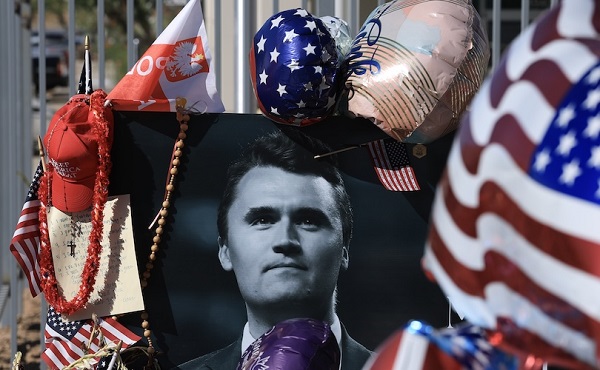
By John Leake
Turning Point Spokesman: “No Exit Wound a Miracle”
Charlie Kirk Show producer Andrew Kolvet repeats extremely dubious claim purportedly made by “the surgeon who operated on Kirk.”
Monday Blaze Media (relatable with Allie Beth Stuckey) reported the following:
Turning Point USA spokesman and executive producer of the “Charlie Kirk Show” Andrew Kolvet revealed new details about the shooting that even doctors are calling a miracle. According to Kolvet, the surgeon who operated on Kirk claimed that the high-velocity bullet was powerful enough to kill multiple large animals — and “should have gone through” his body. But for some reason, Kirk’s body was able to stop it.
“I want to address some of the discussion about the lack of an exit wound with Charlie,” Kolvet wrote in a post on X.
“The fact that there wasn’t an exit wound is probably another miracle, and I want people to know,” Kolvet continued, explaining that he had spoken with the surgeon who worked on Charlie in the hospital.
“He said the bullet ‘absolutely should have gone through, which is very very normal for a high powered, high velocity round. I’ve seen wounds from this caliber many times and they always just go through everything. This would have taken a moose or two down, an elk, etc,’” he recalled.
“But it didn’t go through. Charlie’s body stopped it,” he added.
When he mentioned to the doctor that there were “dozens of staff, students, and special guests standing directly behind Charlie” when he was shot, the doctor reportedly replied, “It was an absolute miracle that someone else didn’t get killed.”
“His bone was so healthy and the density was so so impressive that he’s like the man of steel,” Kolvet recalls the doctor saying.
This is not a credible statement, and it raises a number of concerns.
It strikes me as very perplexing that a “surgeon operated on Kirk,” because in the video of the shooting, Charlie reacted with a decorticate posture—that is, an abnormal body posture characterized by flexion of the upper limbs—caused by severe trauma to the central nervous system. This indicates that the bullet either directly struck his cervical spinal cord, or the shock wave of the supersonic bullet passing near his spinal cord traumatized it.
A 150-grain, .30-06 bullet’s energy at 150 yards from the muzzle varies by ammunition, but a common hunting cartridge has an estimated value of approximately 1,800-2,000 foot-pounds (with the bullet traveling at about 2500 feet per second). In other words, the .30 caliber (.30 inch diameter) metal projectile struck his neck with sufficient kinetic energy to move a 2,000 pound mass a linear distance of one foot.
If the bullet that struck Charlie’s cervical spinal cord was a .30-06 fired from 150 yards away, it would have:
1). Severed his spinal cord, killing him instantly.
2). Passed through his neck.
Note that the cervical vertebrae are supported by strong muscles and have high compressive strength, but are far too delicate to stop a .30-06 bullet traveling at 2,500 feet per second.
If ALL of the kinetic energy of the bullet was absorbed by Charlie’s neck, it would have done spectacular trauma to his neck, as distinct from producing the clean bullet hole visible in the video footage that ruptured his Carotid artery.
Though I appreciate that some may find a supernatural explanation to be consoling, it seems to me that the investigation should not rest on the this explanation.
As I wrote a few weeks ago: If I were investigating the murder, I would consider the hypothesis that Charlie was shot with a weapon equipped with a suppressor and loaded with a subsonic cartridge to further reduce the sound. I have seen footage of someone firing a rifle with this setup, and the shot was amazingly quiet. The effective range of such a weapon is about 100 yards or less, and the shooter must be very skilled.
However, such a setup could fire a subsonic projectile that would penetrate a human neck without passing through it. In this scenario, the actual assassin (firing the suppressed rifle) hypothetically coordinated the timing of his shot with someone else firing a normal (supersonic and loud) rifle cartridge into the air at the same time to create a distraction or red herring.
In a functioning society in which the people trust their authorities—including their medical examiners—it would be easy to discover what happened and to disclose at least a preliminary report that would satisfy most reasonable people. The trouble our Republic is facing now is that so many of us no longer trust our federal and state authorities to tell us the truth.
For example, we have strong grounds for suspecting that medical examiners are not diligently investigating (with the proper analytic methods) unexpected, fatal cardiac arrests in young people to determine if they were caused by vaccine-induced myocarditis.
Subscribe to FOCAL POINTS (Courageous Discourse).
For the full experience, upgrade your subscription.
Crime
France stunned after thieves loot Louvre of Napoleon’s crown jewels

In one of the boldest art crimes in modern French history, a team of masked thieves struck the Louvre Museum in Paris early Sunday, stealing a collection of jewels once belonging to Emperor Napoleon Bonaparte. According to French media, the heist unfolded in just ten minutes — between 9:30 and 9:40 a.m. — as three men disguised as construction workers used a mechanical lift and power tools to access a second-floor balcony of the Apollon Gallery, home to some of France’s most treasured artifacts. Police say the burglars shattered a window, smashed glass display cases, and fled on two motor scooters through the heart of Paris as panicked tourists watched officers flood the museum courtyard. Investigators said the group made off with at least nine pieces, including a necklace, brooch, and tiara tied to Napoleon’s imperial court, though forensic teams are still confirming the exact inventory and value. One damaged crown — believed to have belonged to Napoleon’s wife, Empress Eugénie — was later found discarded near the gallery. The French Interior Ministry called the theft “an intolerable attack on our national heritage,” adding that while the jewels’ market value can be calculated, “their historical significance is beyond measure.”
And here are the first images from the Louvre heist — inside the Apollo Gallery, where it all took place.
A man dressed as a construction worker breaks open a display case.
Museum visitors walk by, unaware that a robbery is unfolding right beside them.
How does something so… https://t.co/whDblfNiYY pic.twitter.com/LQv6jCFqs9
— Muse (@xmuse_) October 19, 2025
Authorities are investigating whether the mechanical lift used in the break-in was part of ongoing renovation work at the site, a potential inside assist that could explain how the thieves breached the museum so efficiently. “The suspects appeared to know exactly where they were going,” one investigator told ABC News, noting that the men wore construction vests and hoods to blend in with workers already on site. One suspect reportedly stood guard outside as the others executed the theft with surgical precision. No injuries were reported and no firearms were used, but the crime has rattled both the museum and the French government.
Jordan Bardella, president of France’s right-wing National Rally party, called the episode “a humiliation for our country” and “proof of the state’s decay.” Writing on X, he said, “The Louvre is a global symbol of our culture. This heist, which allowed thieves to steal the Crown Jewels of France, is an intolerable humiliation for our country. How far will the decay of the state go?” The Louvre — which houses masterpieces such as the “Mona Lisa” and the “Venus de Milo” — attracts nearly nine million visitors a year, making it the most visited museum in the world. Yet the theft comes amid growing turmoil inside the institution. Over the summer, staff staged a mass walkout over overcrowding, understaffing, and what unions called a “collapse in basic security.”
Police now fear the stolen artifacts could be melted down or dismantled to erase their trace, destroying centuries of French history in the process. “The risk is that some of the diamonds could be sold individually, which would make reconstituting the jewels nearly impossible,” a source close to the investigation told Le Parisien. As forensic teams comb through security footage and question contractors, France is once again confronting a painful reality — that even in the heart of Paris, its most sacred treasures are not immune to the growing sense of disorder plaguing the country.
-
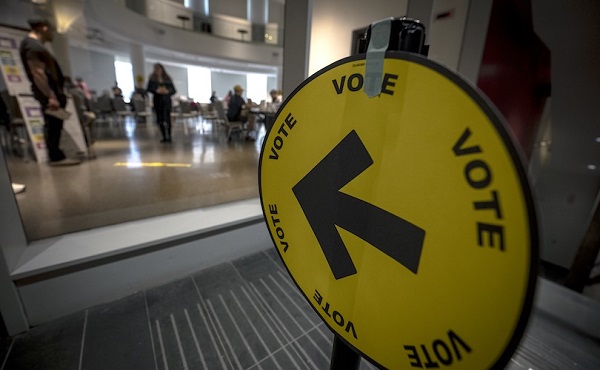
 City of Red Deer1 day ago
City of Red Deer1 day agoPlan Ahead: Voting May Take a Little Longer This Election Day
-

 Crime22 hours ago
Crime22 hours agoFrance stunned after thieves loot Louvre of Napoleon’s crown jewels
-
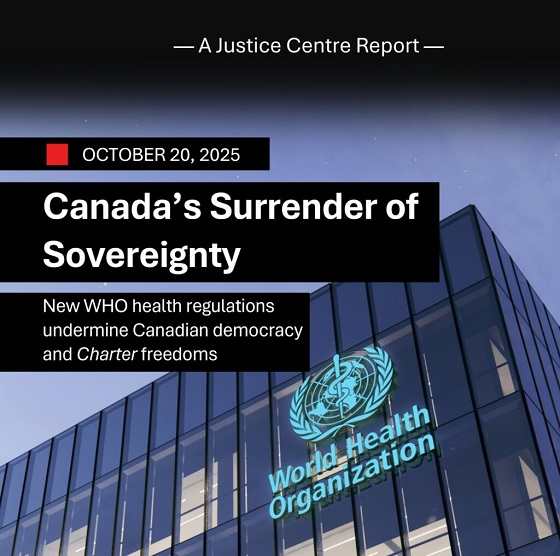
 Uncategorized23 hours ago
Uncategorized23 hours agoNew report warns WHO health rules erode Canada’s democracy and Charter rights
-
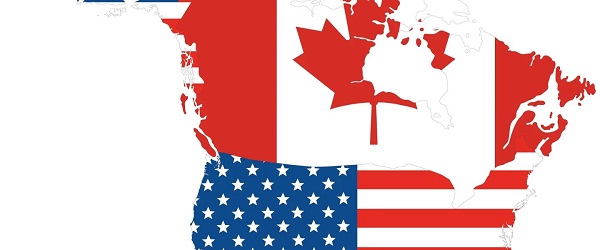
 Business1 day ago
Business1 day agoUS government buys stakes in two Canadian mining companies
-

 Energy24 hours ago
Energy24 hours agoMinus Forty and the Myth of Easy Energy
-

 Frontier Centre for Public Policy1 day ago
Frontier Centre for Public Policy1 day agoOttawa Should Think Twice Before Taxing Churches
-

 Fraser Institute1 day ago
Fraser Institute1 day agoMétis will now get piece of ever-expanding payout pie
-
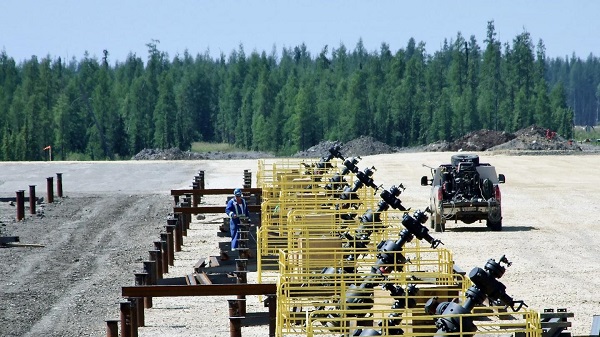
 Alberta1 day ago
Alberta1 day agoBusting five myths about the Alberta oil sands



